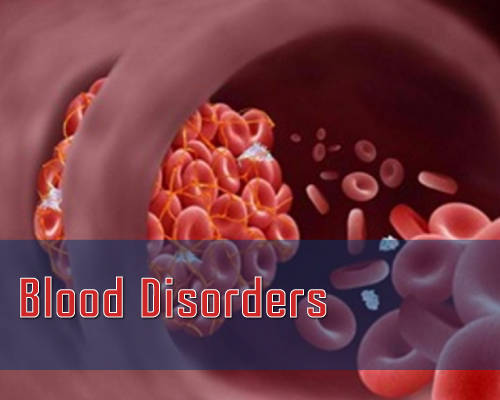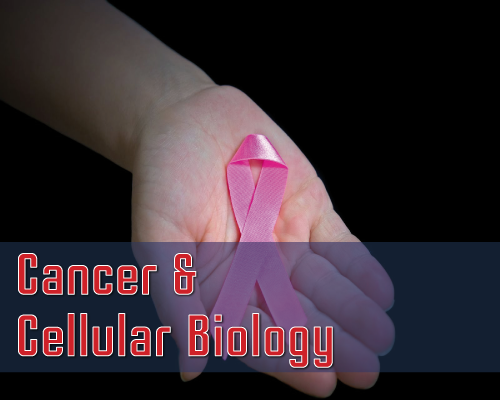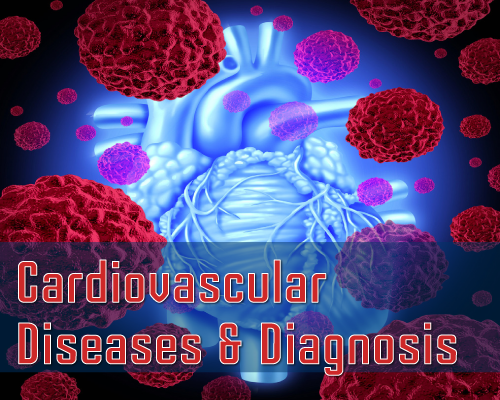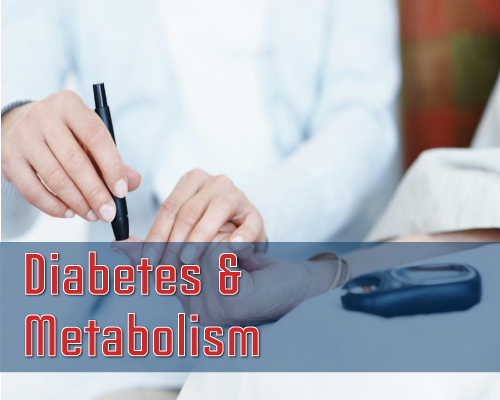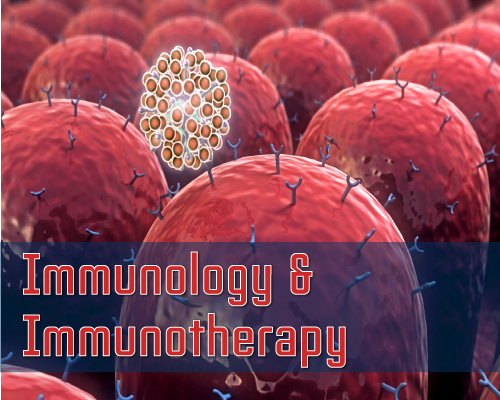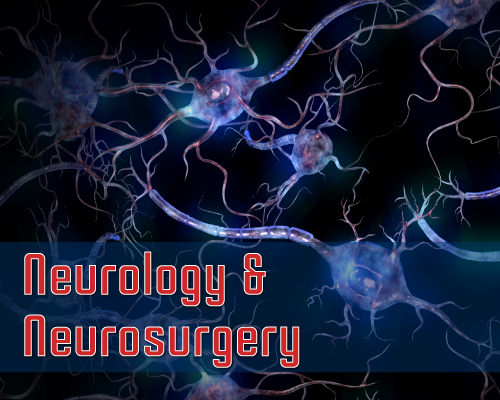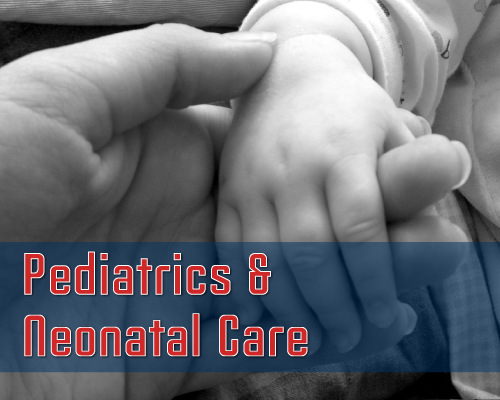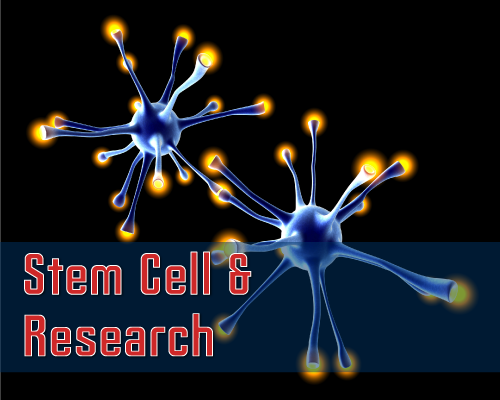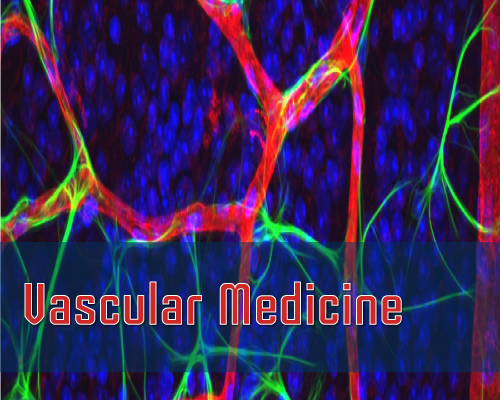Sadia Ashraf1, Mansur ud Din Ahmed1, Muhammad Hassan Mushtaq1, Gurdeep Singh2 and Amjad Khan2*
1Department of PublicHealth and Public Health, University of Veterinary and Animal Sciences, Lahore, Pakistan
2Pakistan Kidney and Liver Institute and Research Centre, Lahore Pakistan
*Address for Correspondence: Amjad Khan, Department of PublicHealth and Public Health, University of Veterinary and Animal Sciences, Lahore, Pakistan, Tel: +923-139-033-008; Email: dramjadkhan77@gmail.com
Dates: 024 November 2017; Approved: 30 November 2017; Published: 04 December 2017
Citation this article: Ashraf S, ud Din Ahmed M, Mushtaq MH, Singh G, Khan A. KAP Survey in Mothers Towards infant Care and Feeding in Pakistan. American J Epidemiol Public Health. 2017;1(1): 001-0027.
Copyright: © Ashraf S, et al. This is an open access article distributed under the Creative Commons Attribution License, which permits unrestricted use, distribution, and reproduction in any medium, provided the original work is properly cited.
Keywords: Neonatal; Breastfeeding; Care Practices; Maternal Knowledge
Abstract
To evaluate traditional neonatal beliefs and care practices among urban and rural residents and assessing predictors of early initiation of breastfeeding, a cross-sectional study was conducted in two districts, Lahore and Rawalpindi of Pakistan. A total of 218 mothers having infants (< 2 years of age) were interviewed through collecting information through a questionnaire. In the logistic regression analysis, presence of professional birth attendant (P-value = 0.012, OR = 3.909), sterilization of feeding bottle (P-value = 0.013, OR = 3.280) and knowledge about reason of vaccination (P-value = 0.010, OR = 2.058) were significantly associated with urbanization. Maternal education was significantly associated with correct timing to start weaning practice, breast milk was sufficient for infant, hand washing practice before breastfeeding, good cord care, vaccination status, reason of vaccination and knowledge about Jaundice in neonatal period (P < 0.05). The results of multivariate ordinal regression showed that young literate mothers ((P < 0.001; OR = 3.192) started breastfeeding earlier than the elder and illiterate mothers. Furthermore, the women with normal delivery (P < 0.01; OR = 0.301) and low socioeconomic class (P < 0.10; OR = 0.339) started breastfeeding earlier. Among 218 mothers 44.5%, newborns were bathed immediately. A significant proportion of mothers 77.1% reported giving prelacteals as first feed. Majority of mothers 30.7% apply oil on umbilical cord. also, 72.5% mothers administered gripe water to their infants. Traditional risky newborn care practices stress the need for promoting health education programs on improving newborn care practices.
Introduction
The infant health challenges and neonatal losses faced by Pakistan are difficult to assess than that experienced by other countries in the world. Care refers to attitude, knowledge and practices of caregivers that provide nutrition, health care and also provide emotional support to infant for adequate development. Three elements are important for the healthy growth and well nourish infant, which are balanced food, health and care in hygienic environment.
Important newborn care practices should be followed to minimize the neonatal morbidity and mortalities [1,2]. Newborn mortality rate is very high in South Asia. As estimated 60% of all newborn deaths and 68% of the world’s burden of perinatal deaths occ6ur in Asia [3] Also 70% of neonatal deaths occur in early days of their life but still the health professionals ignore the infant health care [4] However, the neonatal deaths can be reduced by applying conventional methods which do not depend upon any modern technology equipment. The cost effective methods adopted at the time of delivery should be presence of professional birth attendant at the time of delivery, by keeping baby warm soon after birth and by clean umbilical cord care. The conventional methods adopted by mothers should be balanced nutrition of infant, following hygienic practices, timely vaccination, medication to prevent/treat infections and by initiating early and exclusive breastfeeding practice.
The nature’s perfect gift for infant is breast milk which has no other substitute as breastfeeding provide an infant food and protection with care. Both infant and mother get benefits from breast feeding which includes adequate nutrients for the growth and development of infant, increases infants immunologic defense system and facilitates closeness between mother and infant [5]. The World Health Organization emphasizes exclusive breastfeeding for the first crucial six months and after that, it should be continued up to two years of life along with other semi solid or solid foods [6]. Despite many known advantages of breastfeeding, many mothers do not breastfeed their infant or either breastfeed for a little period.
Different studies from many developing countries have shown that the child health and survival is also dependent on mother’s education level. It has also been observed that literacy has more contribution than providing the health services to decrease the infant mortality [7] Keeping in view the importance of child health and high infant mortality, the present study was planned to explore traditional neonatal beliefs and care practices among urban and rural residents and to assess predictors of early initiation of breastfeeding.
Materials and Methods
Study design and sample
A descriptive cross-sectional study was conducted in Dist. Lahore and Rawalpindi of Pakistan. 218 mothers were enrolled for the study between March 2012 and April 2012. The sampling technique was non-random convenient sampling from community. The current study was conducted in different urban and rural areas of Dist. Lahore and Rawalpindi of Pakistan. A validated questionnaire used to collect information from the mothers of infants up to 2 years of age.
Definition of terms
Exclusive breastfeeding defined as the infant gets all types of nutrients and energy from the breast milk with the possible exception of supplements. A mixture of breast milk and other sources of nutrients and energy (Formula/cow/buffalo’s milk) is called partial breastfeeding. Non breastfeeding indicates that infant gets energy from foods other than breast milk. Pre lacteals feed is defined as giving the newborn baby honey/anything else other than breast milk.
Statistical analysis
The data was coded, entered and analyzed using specialized Statistical Package for Social Sciences (SPSS) version 15. Initial analysis was performed to see the general patterns of the data. Chi-square test is used as a measure of associations between two nominal and one nominal and second ordinal variable [8] the predictors for the early initiation of breastfeeding were checked using univariate and multivariate logistic regression model. Predictor variables that had a significant relationship with the dependent variable at P < 0.25 were entered in multivariate logistic regression model.
Results
Socio-demographic characteristics of mothers and infants
The mother’s ages ranged between 18 and 40 years with a mean age of 27.05 ± 4.2 year. The infant’s age at the time of interview ranged between 1 and 24 months with a mean age of 12.8 ± 7.7 months. Other socio-demographic characteristics are shown in Table 1.
| Table 1: Socio-demographic characteristics. | ||
| Variables | N | % |
| District | ||
| Lahore | 137 | 62.8 |
| Rawalpindi | 81 | 37.2 |
| Place of residence | ||
| Urban | 109 | 50 |
| Rural | 109 | 50 |
| Infant gender | ||
| Male | 104 | 47.7 |
| Female | 114 | 52.3 |
| Infant age (M) | ||
| < 6 | 67 | 30.7 |
| 7-12 | 51 | 23.4 |
| 13-18 | 44 | 20.2 |
| 19-24 | 56 | 25.7 |
| Infant parity | ||
| Primiparous | 80 | 36.7 |
| Multiparous (2-4) | 110 | 50.5 |
| Grand multiparous ≥ 5 | 28 | 12.8 |
| Maternal age | ||
| < 20 | 16 | 7.3 |
| 21-25 | 60 | 27.5 |
| 26-30 | 97 | 44.5 |
| 31-35 | 44 | 20.2 |
| 35 | 1 | 0.5 |
| Maternal education | ||
| Illiterate | 62 | 28.4 |
| Primary and lower ≤ 9 | 53 | 24.3 |
| High school 10-12 | 70 | 32.1 |
| University ≥ 13 | 33 | 15.1 |
| Maternal occupation | ||
| Housewife | 207 | 95 |
| Working | 11 | 5 |
| Type of family | ||
| Nuclear | 71 | 32.6 |
| Joint | 147 | 67.4 |
| Type of delivery | ||
| Normal | 161 | 73.9 |
| Caesarean | 57 | 26.1 |
| Professional birth attendant | ||
| Midwife | 16 | 7.3 |
| Gynecologist | 146 | 67 |
| TBA | 41 | 18.8 |
| LHV | 15 | 6.9 |
| Monthly income | ||
| < 5000 | 23 | 10.6 |
| 5000-10,000 | 84 | 38.5 |
| 10,000-15,000 | 56 | 25.7 |
| >15,000 | 55 | 25.2 |
Logistic regression analysis with response category as place of residence
All those variables which were statistically significant with urbanization using Chi square test were analyzed using binary logistic regression. In the logistic regression analysis, presence of professional birth attendant (P-value = 0.012, OR = 3.909), sterilization of feeding bottle (P-value = 0.013, OR = 3.280) and knowledge about reason of vaccination (P-value = 0.010, OR = 2.058) were significantly associated with urbanization (Table 2).
| Table 2: Chi square association and Logistic regression analysis with response category as place of residence. | |||||
| Variables | χ2 (p-value) | Sig. | Odds Ratio | Confidence Interval 95% | |
| Lower | Upper | ||||
| Maternal education | 18.12 (0.00) * | .731 | 1.100 | .638 | 1.896 |
| Maternal occupation | 4.69 (0.03) ** |
.290 | .281 | .027 | 2.956 |
| Professional birth attendant | 25.24 (0.00) * | .012 | 3.909* | 1.350 | 11.316 |
| Monthly income | 14.04 (0.00) * | .309 | .741 | .416 | 1.320 |
| Type of bottle feeding | 21.25 (0.00) * | .499 | 1.214 | .692 | 2.131 |
| Nutritional supplement | 3.90 (0.04) ** |
.703 | .791 | .237 | 2.641 |
| Sterilization of bottle | 10.30 (0.00) * | .013 | 3.280* | 1.286 | 8.365 |
| Thermal care of baby | 10.92 (0.05) ** | .585 | 1.077 | .825 | 1.408 |
| Routine bathe | 14.02 (0.01) * | .476 | .858 | .564 | 1.306 |
| Vaccination | 9.18 (0.00) * |
.896 | 1.140 | .162 | 8.031 |
| Why vaccines are given? | 27.46 (0.00) * | .010 | 2.058* | 1.186 | 3.572 |
| Knowledge about Jaundice | 9.81 (0.02) ** | .975 | .993 | .627 | 1.572 |
| What should do if Jaundice develops? | 10.14 (0.02) ** | .713 | .901 | .518 | 1.568 |
| *Statistically Significant at α = 0.01. ** Statistically Significant at α = 0.05. | |||||
Maternal education and associated feeding practices
Education level of mothers was significantly associated with urban residents (P < 0.001). Exclusive breastfeeding practice was more in illiterate rural mothers (P < 0.10). Our findings suggested that urban mothers more likely used formula milk in feeding bottle of infant and rural mothers most probably used cow’s milk. The weaning practice was significantly associated with high education level (P < 0.001). Educated women had fairly good idea to start complementary feeding between 4 and 6 months. The educated women know that breast milk was not insufficient for baby (P < 0.001) (Table 3).
| Table 3: Maternal education with associated feeding practices. | |||||
| Variable | Group 1 | Group 2 | Group 3 | Group 4 | χ2(p-value) |
| Urban: rural | 23:39 | 19:34 | 44:26 | 23:10 | 18.12 (0.00) * |
| Feeding practices | n=62 | n=53 | n=70 | n=33 | 11.63 (0.07)*** |
| Exclusive BF | 29 | 20 | 16 | 12 | |
| Partial BF | 26 | 26 | 46 | 20 | |
| Non BF | 7 | 7 | 8 | 1 | |
| If BF when the practice started | n=55 | n=46 | n=62 | n=33 | 3.70 (0.71) |
| Within the first hr. | 17 | 12 | 15 | 13 | |
| B/w 1st and 24th hrs | 26 | 20 | 31 | 14 | |
| Later then 2nd day | 12 | 14 | 16 | 6 | |
| Type of milk used in bottle feeding | n=17 | n=12 | n=15 | n=13 | 12.96 (0.04) ** |
| Formula milk | 11 | 12 | 27 | 11 | |
| Cow milk | 16 | 13 | 8 | 6 | |
| Buffalo milk | 7 | 10 | 19 | 4 | |
| Weaning practice started | n=62 | n=53 | n=70 | n=33 | 22.66 (0.00) * |
| Within 3 months | 11 | 4 | 14 | 3 | |
| B/w 4th&6th month | 29 | 31 | 50 | 25 | |
| Later then 7th | 22 | 18 | 6 | 5 | |
| Frequency of BF | n=56 | n=48 | n=64 | n=32 | 0.04 (0.99) |
| Scheduled | 8 | 7 | 9 | 5 | |
| On demand | 48 | 41 | 55 | 27 | |
| BM insufficient for baby? | n=62 | n=53 | n=70 | n=33 | 27.02 (0.00) * |
| True | 19 | 7 | 15 | 11 | |
| Not true | 33 | 45 | 54 | 22 | |
| Don’t know | 10 | 1 | 1 | 0 | |
| * P-value < 0.01. **P-value < 0.05. *** P-value < Group 1: Illiterate; Group 2: Primary & lower ≤ 9; Group 3: High school 10-12; Group 4: University ≥13. | |||||
Rates of exclusive breastfeeding with respect to age groups
The rates of exclusive breastfeeding in age groups of infants at the time of interview < 6 months, 7-12 months, 13-18 months and 19-24 months were 14%, 8%, 6%, 7% respectively. The lowest age group has more chances to be exclusively breastfeed than the others. The rates of partial (15%) and non-breast feeding (4%) were high in age group 19-24 months (Figure 1).
Prevalence of exclusive breastfeedingPrevalence of exclusive breastfeeding is 35.3% as only 77 out of 218 mothers exclusively breastfeed their infants.
Predictors of early initiation of breastfeeding using univariate regression models
Initially, the explanatory variables were used in univariate regression analysis. The results demonstrated that mothers started breastfeeding to male infants earlier than the female infants (P < 0.1). The younger age group mothers up to 30 years were more likely to start breastfeeding earlier than the elders. All three age groups’ ≤ 20, 21-25 and 26-30 were significantly related to early initiation of breastfeeding with (P = 0.00; OR = 1.508), (P = 0.00; OR = 1.683) and (P = 0.00; OR = 1.700) respectively. The educated women were more likely start breastfeeding earlier than the illiterate (P < 0.1). Working women and house wives were observed with no significance difference. The women with nuclear family system more likely to start breastfeeding earlier than joint family system with (P < 0.05; OR = 0.548). The women with normal delivery significantly start breastfeeding earlier than the women with caesarean delivery (P < 0.001; OR = 0.364). The respondents having low family income start breastfeeding earlier than the higher income groups (P < 0.1) (Table 4).
| Table 4: Univariate Ordinal Regression Models for Demographic Characteristics with timing of initiation of breastfeeding as Response Variable | |||||
| Characteristics | Estimate | Wald Statistics | P-value | Odds Ratio | |
| Gender | Male Female |
0.391 0(r) |
2.111 - |
0.140 - |
1.478*** - |
| Infant’s age at time of interview | ≤ 6 7-12 13-18 18-24 |
0.394 0.201 0.107 0(r) |
1.181 0.274 0.069 - |
0.277 0.601 0.793 - |
1.483 1.223 1.112 - |
| Maternal age | ≤ 20 21-25 26-30 31-35 >35 |
-18.01 -17.97 -17.89 -18.14 0(r) |
887.33 2039.46 2335.38 - - |
0.00 0.00 0.00 - - |
1.508* 1.683* 1.700* - - |
| Maternal education | Illiterate Primary or ≤ 9 High school 10-12 Graduate ≥ 13 |
0.347 0.693 0.619 0(r) |
0.691 2.55 2.28 - |
0.40 0.11 0.13 - |
1.415 1.999*** 1.857*** - |
| Place of residence | Urban Rural |
-.34 0(r) |
1.63 - |
0.20 - |
0.712 - |
| Maternal occupation | House wife Professional |
.179 0(r) |
.084 - |
.771 - |
1.196 - |
| Type of family | Nuclear Joint |
-.601 0(r) |
4.31 - |
.038 - |
0.548** - |
| Type of delivery | Normal Cesarean |
-1.01 0(r) |
10.34 - |
.00 - |
0.364* - |
| Monthly income |
<.5000 5000-10, 000 10,000-15,000 > 15,000 |
-.792 .034 .423 0(r) |
2.54 .010 1.21 - |
0.11 0.92 .22 - |
0.453*** 1.035 1.527 - |
| Parental smoking | Yes No |
.566 0(r) |
3.47 - |
0.062 - |
1.761*** - |
| (r) Reference category * p-value < 0.01. **p-value < 0.05. *** p-value < 0.10. |
|||||
Predictors of early initiation of breastfeeding using multivariate regression model
The results of multivariate ordinal regression showed that young literate mothers ((P < 0.001; OR = 3.192) started breastfeeding earlier than the elder and illiterate mothers Furthermore, the women with normal delivery (P < 0.01; OR = 0.301) and low socioeconomic class (P < 0.10; OR = 0.339) started breastfeeding earlier (Table 5).
| Table 5: Multivariate Ordinal Regression Model with initiation of breastfeeding as Response variable | |||||
| Variables | Estimate | Sig. | Odds ratio | C-I 95% | |
| Lower | Upper | ||||
| Maternal age | |||||
| < 20 | -17.58 | .000 | 2.318* | 18.949 | 16.211 |
| 21-25 | -17.56 | .000 | 2.365* | 18.440 | 16.694 |
| 26-30 | -17.26 | .000 | 3.192* | 18.048 | 16.477 |
| 31-35 | -17.42 | - | |||
| >35 | 0 (r) | - | - | - | |
| Maternal education | |||||
| Illiterate | .764 | .166 | 2.146 | -.318 | 1.846 |
| Primary ≤ 9 | 1.059 | .054 | 2.883** | -.016 | 2.133 |
| 10-12 | .895 | .050 | 2.447** | .001 | 1.790 |
| Graduate ≥ 13 | 0 (r) | - | - | - | |
| Type of delivery | |||||
| Normal | -1.199 | .002 | 0.301* | -1.939 | -.459 |
| Cesarean | 0 (r) | - | |||
| Monthly income | |||||
| < 5000 | -1.082 | .070 | 0.339*** | -2.251 | .088 |
| 5-10,000 | -.172 | .693 | 0.842 | -1.024 | .681 |
| 10-15,000 | .454 | .302 | 1.574 | -.408 | 1.316 |
| >15,000 | 0 (r) | ||||
| Smoking | |||||
| Yes | .585 | .085 | 1.795*** | -.080 | 1.249 |
| No | 0 (r) | ||||
| (r) Reference category * P-value < 0.01. **P-value < 0.05. ***P-value < 0.10. |
|||||
Discussion
The results of our study showed that urbanization was significantly related to education level of women (P < 0.001). The urban to rural ratio for secondary and higher education was 2:1. In urban areas the literacy rate was double than the rural areas. Urbanization was also significantly related to working status of mother (P < 0.05). The urban to rural ratio for the working women was 4.5:1. There were statistically significant differences between urban and rural residents in most of the variables studied. The urban mothers started breastfeeding earlier in contrast to the rural mothers, more fed according to their self-designed schedule. Presence of gynecologist as a professional birth attendant was significantly related to urbanization (P < 0.01). Difference in the monthly income of urban and rural residents was also significantly associated (P < 0.05). The urban mothers more likely used commercial formula milk by bottle than the rural mothers where cow’s milk was preferred (P < 0.01). The urban mothers take nutritional supplement significantly (P < 0.05), sterilize the feeding bottle (P < 0.001) and the educated urban mothers know that breast milk is not insufficient for infants (P < 0.05) as compare with the rural mothers. Thermal care was also significantly related to urban mothers (P = 0.05). The urban mothers realized the importance of vaccination more than the rural mothers and they know the actual reason of vaccination that prevent the infant from diseases (P < 0.001). The urban mothers significantly have knowledge than the rural mothers that Jaundice in neonatal period was normal condition which could be treated by exposing the infant to sunlight (P < 0.05).
In newborns, thermal care is much important newborn care practice which gets ignored most of the time [9] especially in rural areas where TBA/LHV immediately bathe the newborn after delivery. This is a very common practice in Pakistan to bathe the neonatal soon after birth. In the present study majority of mothers (44.5%) practice the first bathe soon after delivery. Although, it is a risky practice which leads the newborn towards hypothermia and it gets worse if there is lack of warm clothes [10]. This is in contrast to 48% mothers practiced optimal thermal care in a study conducted in Eastern Uganda [11]. Also in the present study all the mothers have fairly good idea about maintenance of newborn’s body temperature with warm clothes and by keeping the baby close to mother. However, 4% mothers said that it depends upon weather condition. There is need to educate the women to prevent hypothermia in neonatal.
Umbilical cord care is always stressed because in newborn it is the main entry point for infections. In many rural areas where deliveries were conducted by untrained TBA’s, guidelines for the cord care were seldom followed. The WHO recommends dry cord care practice unless indicated to apply antiseptics. Various studies in developing countries have reported mothers applying substances like mustard oil, turmeric, antiseptic lotion etc on cord stump [12]. In this study only 20.2 % mothers adopted the practice to leave the cord stump as such. Majority of mothers 30.7% applied ghee/oil, 22.5% mothers applied antibiotic cream while as indicated by doctors 19.3% mothers applied spirit to cord stump. One point to be noted was 4.1% mothers apply ash/surma to the cord stump which might be risk of contamination. This shows there is need to educate mothers. These findings can be compared with a study where 25% mothers apply oil and about 2% mothers apply ash on the cord stump [10].
Although immunizations do not come under the essential newborn care practices but it is important to educate mothers regarding immunization. Majority of mothers 89% vaccinate their infants and they know that vaccines are important prophylactic measure against diseases. 61% mothers have fair knowledge about reason of vaccination that vaccines prevent the infants from diseases while 34.9% mothers did not know the reason of vaccination. It has been proved through studies that better knowledge about vaccines would improve the vaccine coverage [13,14]. Another traditional practice followed by mothers is the use of ‘Woodward’s celebrated gripe water’ as a non-prescribed medicine in the past till it was banned in most of the developed countries since 1980’s [15] But it is still available in the pharmacies of Pakistan and used by mothers. In the current study, 72.5% mothers used gripe water. This is comparable with the study by [10] where 61% mothers give gripe water. This is in contrast to 13% of mothers using gripe water in England [16] Majority of mothers 29.4% used gripe water as a preventive measure for easy digestion. 18.8% mothers were using it as nutritional supplements while 14.7% mothers said that it helps to relief stomach pain. The use of gripe water practice must be discouraged because administration of gripe water might mask the symptoms of major illness in infant.
Prevalence of exclusive breastfeeding is 35.3% as only 77 out of 218 mothers exclusively breastfeed their infants. [17,18] observed prevalence of exclusive breastfeeding in India as 26.4% and 37% respectively which were comparable with our study. Among the exclusively breastfeed mothers 55.8% were rural residents and 44.2% were urban residents. Majority mothers 169 (86.7%) fed their infants on demand. It was comparable with the study of [19] in rural areas of West Bengal where 84.5% mothers practice on demand feeding. Our findings suggested that illiterate and rural respondents were more likely to exclusively breastfeed than the urban and educated respondents. It was compared with the study conducted in Malaysia where less educated mothers were more likely to breastfeed their infants than mothers with high education [20] But in contrast to Western communities and developed countries education had positive effect on exclusive breastfeeding practice [21, 22]. In our study, high education, working women, caesarean section, parental smoking, low and high socioeconomic class were barriers in breastfeeding the infant. The middle socioeconomic class was more likely to exclusively breastfeed the infant than the others.
Among the mothers breastfeeding their infants, only 57 (29.2%) mothers initiated breastfeeding within the first 1 hour. In contrast, 9.9% mothers started breastfeeding within the first hour in Turkey [23]. However, 90 (46.2%) mothers initiated breastfeeding within 24 hours. The mothers 48 (24.6%) started breastfeed after 24 hours while Madhu [24] in India found 19% mothers initiated breastfeeding after 24 hours which was comparable with the present study. Although exclusive breastfeeding practice was significantly associated with illiterate and rural mothers (P < 0.10) but education level has significant association with other practices. As educated women were more likely to initiate breastfeeding within the first hour than illiterate women and women with formal education. The educated women know when to start complementary feeding than the less educated and illiterate (P < 0.001). The complementary feeding should not be started before 4 months and it should not be delayed after 6 months [25, 26] early introduction of solid/semi solid feed was also a barrier for breastfeeding so this practice should be discouraged. The educated women know that Breast milk was not insufficient for baby (P < 0.001). The hygienic practices for infants were also significantly associated with the high education level as educated women were more likely to wash their hands before breastfeeding than the less educated and illiterate women (P < 0.05). The educated women were more likely to take thermal care (P < 0.10), also concerning about daily bathe of their infant (P < 0.05) and had good idea about umbilical cord care (P < 0.00). The educated women more likely vaccinate their infants and they know about vaccines which prevent their infant from diseases (P < 0.001). They have fairly good idea about Jaundice in neonatal period that it is a normal condition (P < 0.001). Thus the education of the mother is crucial for the proper care of newborns. Our study results can be compared with Sandiford [27] that education plays a vital role for the child health, independently of other social and economic advantages.
Proportional odds model with Log it link function were used to check the significance of explanatory variables (Demographic characteristics) for response category timing of initiation of breastfeeding in univariate and multivariate analysis models. Univariate analysis was done for all those explanatory variables that had some meaningful relation with response variable. For multivariate models, all those variables were considered whose univariate Wald test has a p-value < 0.25) [28]. Demographic characteristics like gender, infant’s age, maternal age, maternal education, maternal occupation, place of residence, type of family, and type of delivery, monthly income and parental smoking were used.
The results of multivariate ordinal regression showed that young literate mothers ((P < 0.001; OR = 3.192) started breastfeeding earlier than the elder and illiterate mothers which is comparable to a study in Turkey that literate mothers more likely to initiate breastfeeding earlier Ergenekon [23]. Furthermore, the women with normal delivery (P < 0.01; OR = 0.301) and low socioeconomic class (P < 0.10; OR = 0.339) started breastfeeding earlier.
Conclusion
It can be concluded from results that infant care is more appropriate in urban residents as compare to the rural residents. This difference is because of lack of awareness, lack of education and lack of facilities in rural areas. Some rural areas even do not have vaccination centers nearby to vaccinate their infants. Educated mothers have more awareness and knowledge about infant care and feeding practices than the illiterate/less educated mothers. Literate mothers also initiate breastfeeding earlier as compare to illiterate. Thus education of women plays a vital role for a healthy next generation. The Government should emphasize prenatal and postnatal health education so that 4 million newborn deaths can be minimized.
References
- Moss W, Darmstadt G, Marsh D, Black R.E, Santhosham M. Research, Priorities for the Reduction of Perinatal and Neonatal Morbidity and Mortality in Developing Country Communities. J Perinatol. 2002; 484-495. https://goo.gl/sQ2T8S
- Darmstadt G, Bhatta B, Cousens S, Adam T, Walker N, Bernis L. Evidence based, cost effective inter-ventions, How many newborn babies can we save, 2005: 977-988. https://goo.gl/yWVxWr
- Paul V, Beorari A, Regional Issues. Journal of Perinatology, 2002; 10-11.
- Costello A, Manandhar D. Improving Newborn Infant health in Developing Countries, 2000. https://goo.gl/5dNQen
- Andraca I, Peirano P, Uauy R. Nutrition and care in the preterm and neonatal periods and later development: human milk is best for optimal mental development.1998; 43-68.
- WHO, The optimal duration of exclusive breastfeeding: Report of an expert consultation. Geneva. World Health Organization. 2001 https://goo.gl/F8K4s6
- Mosley W.H, Will primary health care reduce infant and child mortality.In J. Vallin and A. Lopez (eds.), Health Policy, Social Policy, and Mortality Prospects (Ordina, Liege). 1985; 103.
- Agresti A, Analysis of Ordinal Categorical Data. John Wiley & Sons. 1984 New York https://goo.gl/83L6f9
- Baqui A, Williams E, Darmstadt G, Kumar V, Kiran T, Panwar D. Newborn Care in Rural Uttar Pradesh. Indian J Pediatr. 2007; 241-247. https://goo.gl/wgBBdp
- Mohamed A.P, Vishnu B, Maheswari. Knowledge attitude and practices of neonatal care among postnatal mothers. 2010: 147-152. https://goo.gl/FuSjKa
- Waiswa P, Peterson G, Tomson Pariyo. Poor newborn care practices - a population based survey in eastern Uganda. BMC Pregnancy and Childbirth. 2010. https://goo.gl/dr3uW4
- Kesterton A J, Cleland J. Neonatal care in rural Karna-taka: healthy and harmful practices, the potential for change. BMC Pregnancy and Childbirth, 2009; 20. https://goo.gl/z7Ekhi
- Rasania S K, Sachdev T R. Pulse polio programmed: an overview of parent's perception. J Communication Dis, 2000; 275-283. https://goo.gl/DXT8pe
- Phukan R K, Barman Mahanta J. Factors associated with immunization coverage of children in Assam, India. Over the first year of life. Trop Pediatr J. 2009; 249-252. https://goo.gl/LVUW9L
- Blumenthal I, Gripe Soc Med J. Water Story. 2000;173-174 https://goo.gl/tV2gYc
- Headley J, Northstone K. Medication administered to children from 0 to 7.5 years in the Avon Longitudinal Study of Parents and Children (ALSPAC). European Journal of Clinic Pharmacol, 2007; 63: 189-195. https://goo.gl/o1pvhE
- Taneja D K. A study of infant feeding practices and the underlying factors in a rural area of Delhi. Indian Journal of community medicine. 2003; 107-111. https://goo.gl/6zX3Fa
- Kameshwarrao A. Breast feeding behavior of Indian women. Indian journal of community medicine, 2004; 62-64 https://goo.gl/9nAAsr
- Bandyopadhyay SK, Chaudhury N,Mukhopadhyaya BB. Breast feeding practices in rural areas of West Bengal. Indian journal of public health, 2000; 44: 137-138 https://goo.gl/Pwu2RT
- Tan K. Knowledge, attitude and practices on breastfeeding in Klang, Malaysia. The international medical journal. 2009; 17-21. https://goo.gl/9eFcCY
- Di Napoli A, Lallo D, Pezzotti P, Forastiere F, Porta D. Effects of parental smoking and level of education on initiation and duration of breastfeeding. 2006; 678-85 https://goo.gl/54DhUD
- Forster L, McLachlan HL, Lumley J. Factors associated with breastfeeding at six months postpartum in a group of Australian women. International Breastfeeding Journal, 2006; 1: 18. https://goo.gl/ak5Hxw
- Ergeneko O P, Elmaci N, Ertem Saka G. Breastfeeding beliefs and practices among migrant mothers in slums of Diyarbakir, European journal of public health, Turkey, 2001; 143-148. https://goo.gl/Pe7GnT
- Madhu, K, Sriram C, Ramesh. Breast feeding practices and newborn care in rural areas. A descriptive cross sectional study. Indian journal of community medicine, 2009; 243-244. https://goo.gl/d35J1A
- Brown K, Dewey K, Allen L. Complementary Feeding of Young Children in Developing Countries: A Review of Current Scientific Knowledge. World Health Organization, Geneva, Switzerland. 1998; 1-16. https://goo.gl/CvBJV
- Kim F, Lawrence W, Francesco W, Aileen v. Feeding and Nutrition of Infants and Young Children, WHO Regional Publications, European Series. 2000; 174-177 https://goo.gl/EkzgKY
- Sandiford, P, Cassel J, Montenegro M, Sanchez G. The impact of women’s literacy on child health and its interaction with access to health services. Population studies. 2010; 5-17 https://goo.gl/9wmvUE
- Hosmer D W, Lemeshow S. Applied Logistic Regression. John Wiley & Sons. USA. 2nd edd. 2000. https://goo.gl/p2P8w6
Authors submit all Proposals and manuscripts via Electronic Form!


